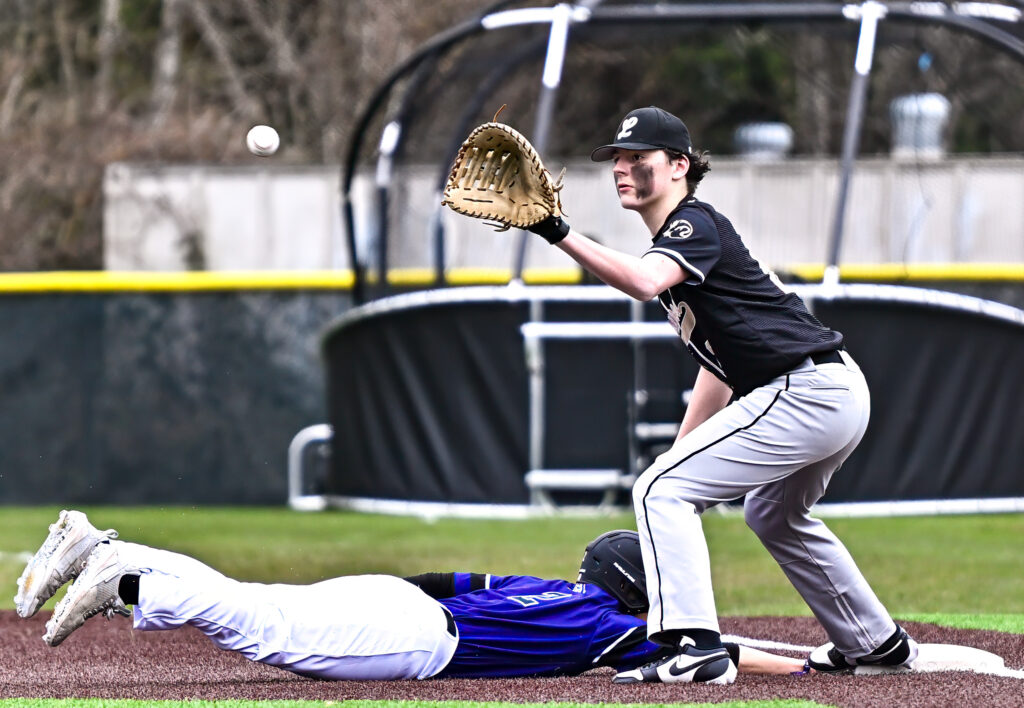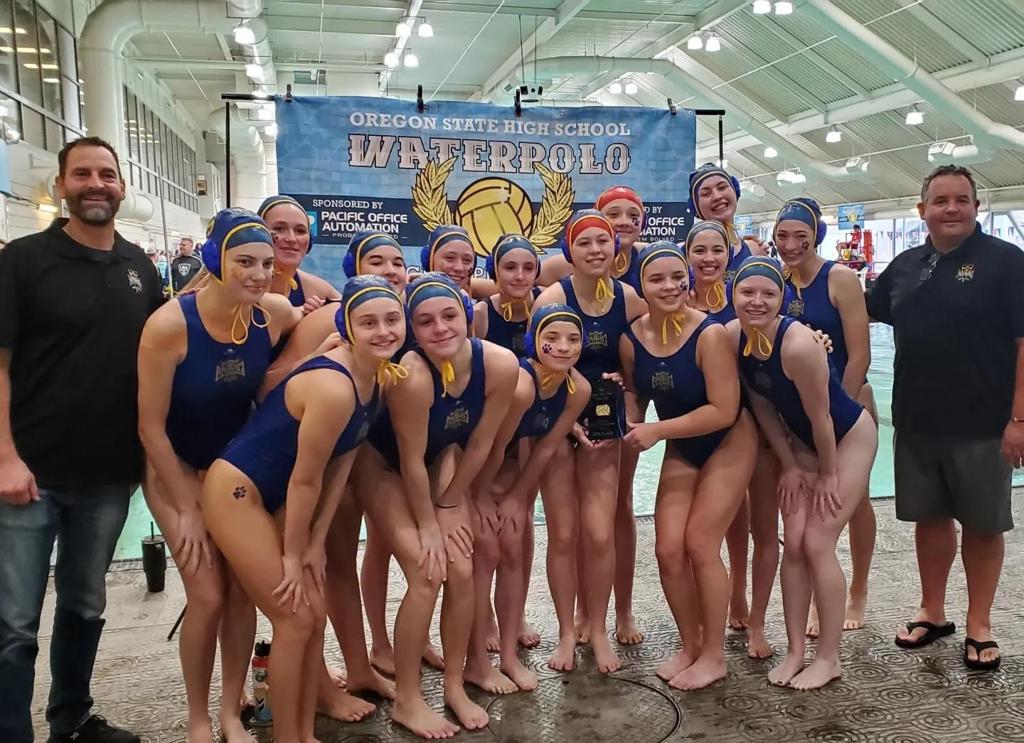NIL
Iowa basketball coach Ben McCollum agrees to 6-year contract with starting pay of $3.35M
Iowa men’s basketball coach Ben McCollum agreed to a six-year, $22.75 million contract that runs through the 2030-31 season, according… Iowa men’s basketball coach Ben McCollum agreed to a six-year, $22.75 million contract that runs through the 2030-31 season, according to the memorandum of understanding he signed last month. The document, obtained Friday through an […]

Iowa men’s basketball coach Ben McCollum agreed to a six-year, $22.75 million contract that runs through the 2030-31 season, according…
Iowa men’s basketball coach Ben McCollum agreed to a six-year, $22.75 million contract that runs through the 2030-31 season, according to the memorandum of understanding he signed last month.
The document, obtained Friday through an Associated Press public records request, outlines a pay package that lists McCollum’s base salary at $500,000 each year with supplemental pay that increases annually. His formal contract was not available for release, the university said.
McCollum will earn $3.35 million in his first year, with his compensation rising to $4.1 million in the sixth year.
McCollum would be in line for six-figure bonuses if the Hawkeyes reach the NCAA Sweet 16, topped by $400,000 for winning the national championship. A Big Ten regular-season title would earn him $75,000 and a conference tournament championship $50,000. Additional bonuses are tied to his players’ academic performance.
He will have a salary pool of about $2.1 million for assistant coaches.
McCollum, whose hiring was announced March 24, led Drake to the Missouri Valley Conference regular-season and tournament championships and a win in the NCAA Tournament in his only season with the Bulldogs.
Athletic director Beth Goetz announced McCollum’s hiring 10 days after she fired Fran McCaffery and two days after McCollum wrapped up a 31-4 season with a loss to Texas Tech in the second round of the West Regional.
___
AP college basketball: https://apnews.com/hub/ap-top-25-college-basketball-poll and https://apnews.com/hub/college-basketball
Copyright
© 2025 The Associated Press. All rights reserved. This material may not be published, broadcast, written or redistributed.
NIL
Yormark’s extension, Trump’s commission, CFP expansion
The offseason is definitely not the slow season as yet another week delivered news impacting both the Pac-12 legacy schools and other universities across the region. Here are four developments you might have missed. 1. Extension for Big 12 commissioner Brett Yormark Nitty gritty: Yormark, whose contract was set to expire in 2027, received a […]
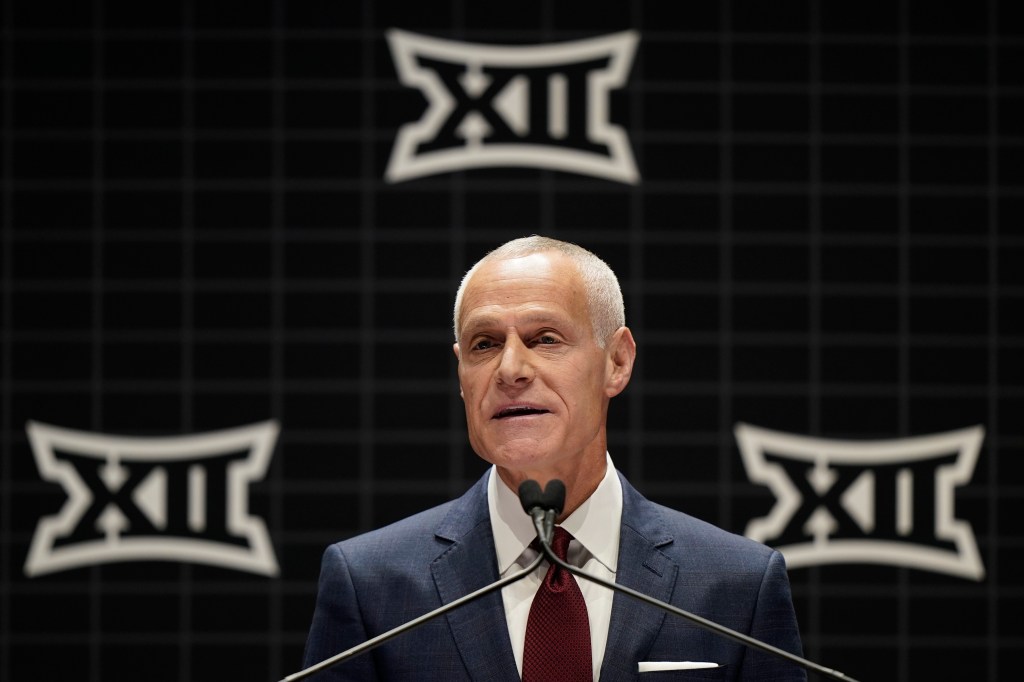
The offseason is definitely not the slow season as yet another week delivered news impacting both the Pac-12 legacy schools and other universities across the region.
Here are four developments you might have missed.
1. Extension for Big 12 commissioner Brett Yormark
Nitty gritty: Yormark, whose contract was set to expire in 2027, received a three-year extension from the board of directors that expires in the summer of 2030.
Why it matters: The extension itself is no surprise: Yormark has done first-rate work changing the conference’s membership structure and building its brand. But the timing is deeply significant, in that it allows Yormark to shape the future.
The Big 12’s media rights agreement expires in the summer of 2031, which means the next contract likely will be signed and sealed in the spring of 2030 — during Yormark’s tenure. (Media deals are typically formalized 12-to-18 months in advance of the start date.)
Assuming he doesn’t leave the Big 12 on his own volition, Yormark will lead the strategic decisions on expansion and network partners and, with hand-picked advisors, negotiate the media deal for 2031 and beyond.
But that’s not all. That’s not close to all.
The extension means Yormark will be atop the Big 12 during the vital 2028-29 window, when 1) the College Football Playoff examines format changes, 2) the Big Ten mulls expansion for its next media contract cycle and 3) the ACC’s top football brands consider leaving the conference as their exit fees plunge.
Whatever college football becomes in the 2030s, the shape likely will become clear in the final years of the 2020s. Yormark’s extension gives him the chance to position the Big 12 within the shifting landscape.
2. Presidential commission on college sports
Nitty gritty: The Trump Administration is reportedly preparing to appoint a commission to study college sports and seek solutions to many of the industry’s intractable issues. Former Alabama coach Nick Saban and billionaire Cody Campbell, a Texas Tech booster, are expected to lead the group, according to Yahoo.
Why it matters: College sports is devolving into anarchy with the transfer portal, unchecked NIL payments and a competition calendar that’s increasingly unwieldy.
Even the House vs. NCAA lawsuit settlement, which will create a revenue-sharing model and NIL enforcement mechanism, is limited in scope (if approved). It will not, for example, end the barrage of antitrust cases filed against the NCAA over its amateurism policies.
A collectively bargained agreement with college athletes would provide the desired law and order but requires the players to be declared employees, a step university presidents are reluctant to take.
The other option: A liferaft from Congress, which has the authority to provide antitrust protection and codify NCAA rules. But years of lobbying by college sports officials have gone nowhere.
Trump’s commission won’t have the authority to make material changes on the legal front, but it could, potentially, generate the momentum that spurs lawmakers to act.
“I’m always a bit reluctant to have the federal government poking around in my business, invited or uninvited,” an industry source told the Hotline. “However, in this case, it might potentially do some good to get some of the higher-level issues figured out.”
3. College Football Playoff expansion … to 16?
Nitty gritty: The ACC, Big 12, Big Ten and SEC commissioners met this week in New York and discussed the future of the CFP, with a 16-team event “more preferred” for the contract cycle starting in 2026, according to ESPN.
Why it matters: To this point, the media narrative around CFP expansion has focused on a 14-team field. Now, it appears, the power conferences are focused on 16 — and increasing the number of at-large berths.
The model most likely to be adopted would provide four automatic bids to the SEC and Big Ten, two to the ACC and Big 12, one to the top team from the Group of Six, which includes the rebuilt Pac-12, and three to at-large teams. (It’s referred to as 4-4-2-2-1-3 by the commissioners.)
Notre Dame would have a manageable pathway to one of the at-large bids, leaving two for additional teams from the power leagues.
The move to 16 is straight out of the more-is-better playbook, but there’s a trick to making expansion work: the calendar.
In order to limit the event to four rounds, all 16 teams would compete the weekend before Christmas.
Where would the four additional CFP games be slotted into a crowded sports window that includes NFL games on Thursday, Saturday and Sunday?
NIL
Ball State University – Official Athletics Site
AKRON, Ohio – – After opening the day with a hard-fought 5-4 victory over fifth-seeded Akron, the Ball State softball team saw its 2025 season come to an end with an 8-0 (5) loss to top-seeded Miami in the final elimination bracket game of the 2025 MAC Softball Championship. Despite the setback to the […]
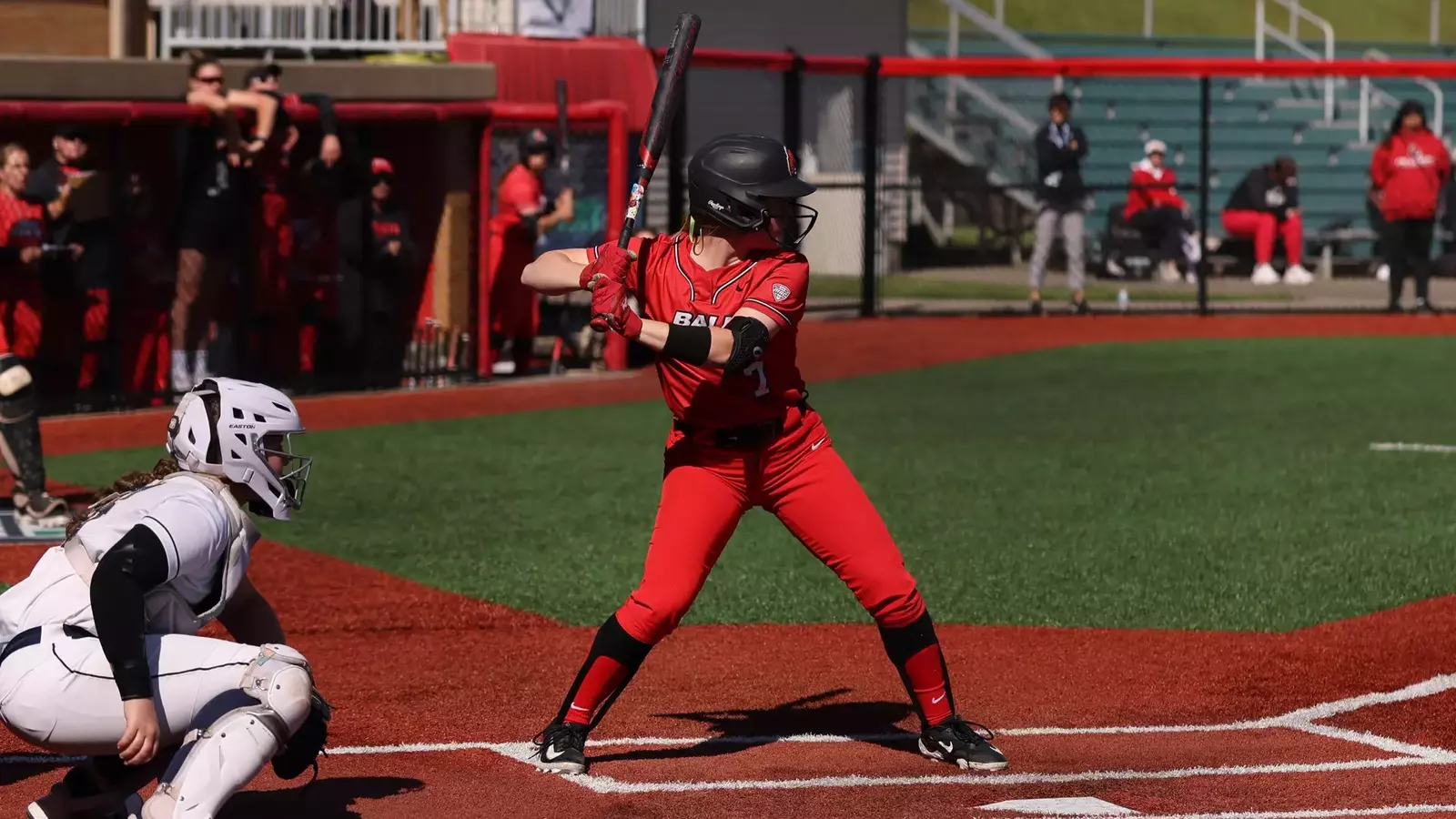
Despite the setback to the six-time defending MAC regular season champions, it was another solid season for the Cardinals who closed the year with a 33-18 overall record. It was the 17th time in program history Ball State reached the 30-win mark, with the 33 wins tying as the 12th-most in a season in program history.
Ball State ranked among the nation’s leaders in runs per game for a majority of the season, led by the efforts of redshirt senior catcher McKayla Timmons and sophomore shortstop Maia Pietrzak. Pietrzak led the MAC with 60 runs scored on the year, while Timmons was a close second with 57.
GAME ONE RECAP: Ball State 5 – Akron 4
While the Zips struck early in Friday’s opener, putting two runs up in the top of the first, the Cardinals answered call in the bottom of the frame starting with a one-out single by Timmons.
Senior left fielder Kara Gunter cut the lead in half with an RBI double in the next at bat, while a two-out triple from junior center fielder Ashlee Lovett tied the score. The Cardinals were not done there, however, as redshirt junior second baseman McKenna Mulholland followed with a double to right center to give BSU a 3-2 edge.
After a scoreless second inning, the Zips managed to tie the score on a one-out RBI single with runners at first and second. After a fly out put runners on the corners with two outs, the Cardinals were able to keep the score tied at three catching the trail runner trying to steal on a failed squeeze bunt attempt.
The score remained tied until the bottom of the fourth when redshirt junior right fielder Hayley Urban started a mini two-out rally with a single to left. Pietrzak followed with a triple to right center, giving the hosts in the game a 4-3 edge.
Ball State’s lead would not last long, however, as back-to-back one-out singles helped Akron tie the score at 4-4 in the top of the fourth.
The Cardinals would take the lead for good two at bats later, starting with a leadoff walk to redshirt freshman pinch runner Payton Fox. Fox would move to third on a single from redshirt junior third baseman Katie Van Der Mark and an error on the play, before scoring on a single from Pietrzak.
After another brilliant start from junior Ella Whitney, who celebrated her 21st birthday by picking up her 20th win of the season, sophomore Brinkley Kita entered for the final inning. Kita would retire the first two batters she faced, before one last single gave the Zips a glimmer of hope. However, she forced a pop up to second to end the game and earn her first save of the season.
Over the game’s first six innings, Whitney would scatter seven hits while allowing four runs, only two of which were earned.
GAME TWO RECAP: Ball State 0 – Miami 8 (5)
Unfortunately, Ball State could not carry over the momentum from the Akron win into the nightcap versus the Miami who entered the contest having suffered its first tournament loss since the 2019 campaign earlier in the day.
The RedHawks opened the game with a two-run home run in the first and added another in the second to take an early 4-0 lead. They then took complete control of the game with a four-run fourth inning, pulling ahead 8-0.
Ball State’s lone two base runners in the game were Timmons and senior designated player Kaitlyn Gibson who were hit by pitches in the first and second innings, respectively. Ball State finished the season leading the nation with 91 hit batters on the year.
NIL
Huskies Punch Ticket to the 2025 BIG EAST Championship Game
VILLANOVA, P.a. – The No. 2 seed UConn softball team defeated the No. 4 seeded Creighton Bluejays in the BIG EAST semifinal, 12-1 in a six inning run rule on Friday evening, advancing the Huskies to the BIG EAST championship game on Saturday, May 10 at 5:00pm. UConn advances to the championship […]
VILLANOVA, P.a. – The No. 2 seed UConn softball team defeated the No. 4 seeded Creighton Bluejays in the BIG EAST semifinal, 12-1 in a six inning run rule on Friday evening, advancing the Huskies to the BIG EAST championship game on Saturday, May 10 at 5:00pm. UConn advances to the championship series for the for the third time in the last five years.
Payton Kinney made her second consecutive start in the circle at the BIG EAST Tournament for the Huskies, marking her 25th start of the season. Kinney was sensational, tossing 4.0 scoreless innings, giving up just one hit, adding three strikeouts. The right hander moves to 14-5 this season.
UConn got their offense going early, scratching a run across in the first inning, giving the Huskies a 1-0 lead. UConn loaded the bases for Kaitlyn Breslin who was hit by a pitch, forcing in Grace Jenkins from third base.
In the third inning Grace Jenkins doubled the Huskies lead with a solo home run to center field, her 20th of the season, edging the UConn lead to 2-0.
In Jenkins’ next plate appearance in the fifth inning, the BIG EAST Player of the Year took Creighton’s starter deep once again, this time it was a towering two-run shot to right field, her 21st of the year, extending the Huskies lead to 4-0.
The two-run homer from Jenkins jump started the UConn offense, as the Huskies pushed across three more runs in the fifth inning, putting UConn in the driver’s seat with a 7-0 lead.
Cat Petteys continued her hot hitting at the plate, homering in her fourth straight game, as the rookie hit a two-run shot to right center field, the 14th homer of the season for the BIG EAST Freshman of the Year.
Later on in the fifth inning, UConn manufactured another run with two outs on back to back base hits. Haley Coupal got it started with a single to left field. Kaitlyn Kibling followed with a double to left center, scoring Coupal all the way from first base.
Sydnee Koosh came on in relief for Kinney in the fifth inning, making her 26th appearance this season for the Huskies. Koosh went just 0.2 inning giving up one run on a pair of hits.
Creighton scored their lone run of the game in the fifth inning on a bases loaded walk, making it 7-1.
Hope Jenkins came on in relief for Koosh in the middle of the fifth inning, making her 31st appearance of the season for the Huskies. Jenkins closed out the game in the circle, keeping the Bluejay lineup hitless through her 1.1 innings, adding a strikeout.
UConn’s offense put up another five spot in the sixth inning, putting the game out of reach for Creighton at 12-1. The Huskies once again loaded up the bases for the middle of the order to do damage. Petteys knocked in her third RBI of the game with sac fly to center field, scoring Grace Jenkins from third base. Breslin followed with a single to left field, scoring Kaiea Higa from second base.
Haley Coupal capped off the big inning with a three-run homer off the scoreboard in left field, her second of the season, securing the run rule victory in the BIG EAST semifinals.
News and Notes
- Three Huskies had three RBI in Grace Jenkins, Cat Petteys, and Haley Coupal.
- Grace Jenkins recorded her third multi-home run game this season and the fourth of her career. She notched her fourth three-hit game this year, and her team leading 18th multi-RBI game, giving her 67 RBI this season. Jenkins extended her on-base streak to 29 straight games.
- Cat Petteys has hit two home runs through her first two career postseason games. Petteys has homered in her last four straight games, the most by a Husky this season.
- Payton Kinney has started in five straight games for the Huskies. She retired 8 straight Bluejay hitters from the first to fourth innings.
- Haley Coupal has had back to back multi-hit games to begin her 2025 BIG EAST campaign. This is the fourth multi-RBI game for Coupal this season.
- Kaitlyn Breslin recorded her 14th multi-RBI games this season.
- Kaiea Higa recorded her 15th multi-hit game this season.
- UConn’s offense scored double digit runs for the 14th time this season.
- UConn loaded the bases twice.
- UConn advances to the championship series for the for the third time in the last five years.
Up Next
UConn advances to the BIG EAST championship game on Saturday, May 10 at 5:00pm. UConn will play the winner of Creighton vs. Providence set to take place before the championship game at 1:30pm.
Follow our social media pages for updates.
Twitter – UConnSoftball
Instagram – UConnSoftball
Facebook – UConn Softball
NIL
University of Michigan Athletics
» Michigan scored four runs in the third and staved off a late Purdue rally to earn a 4-2 win in the Big Ten Tournament semifinals. » Lilly Vallimont knocked out a three-run homer, while Lauren Putz drove in the game’s first run on an RBI single up the middle. » Lauren Derkowski and Erin […]
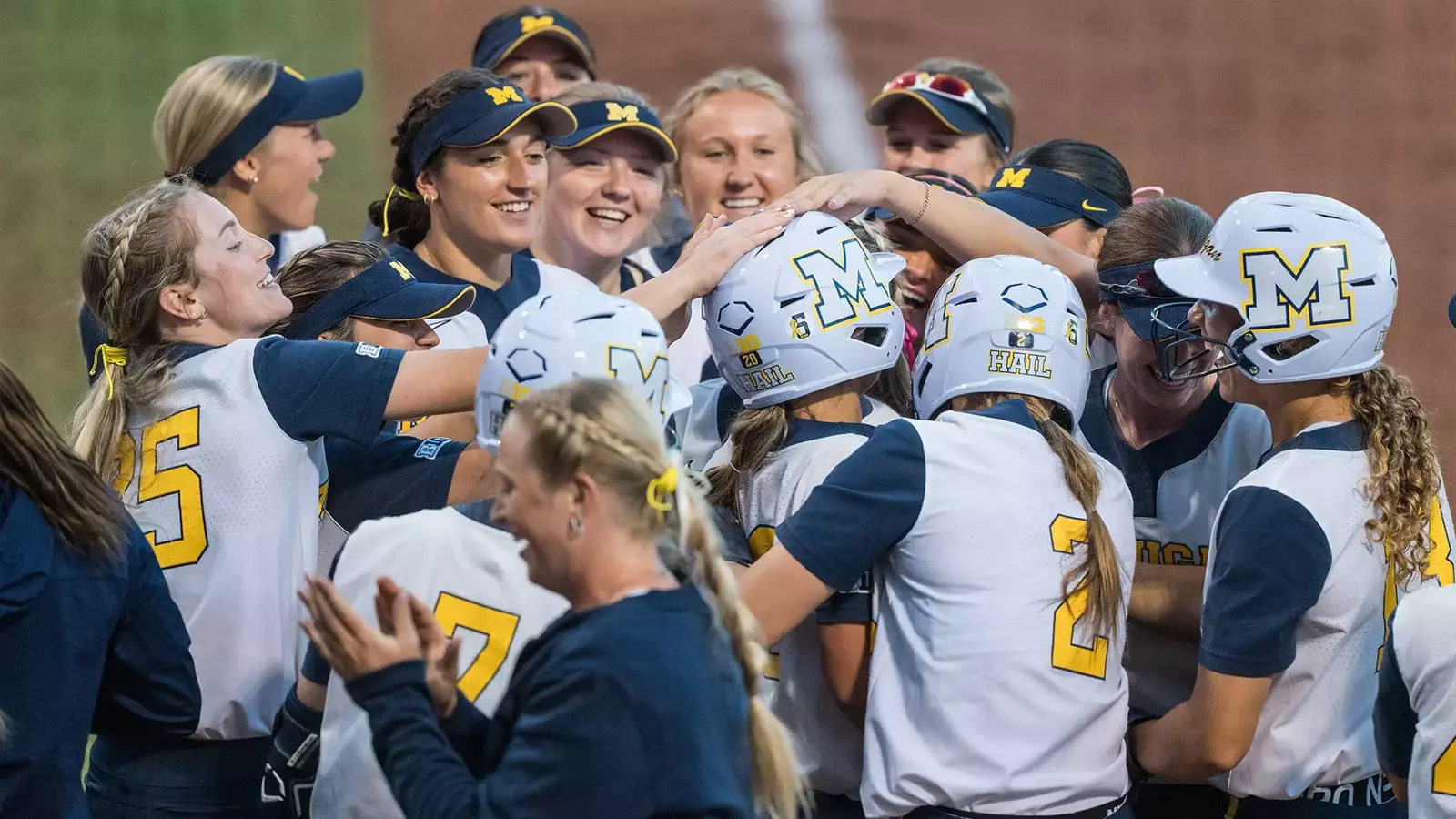
» Michigan scored four runs in the third and staved off a late Purdue rally to earn a 4-2 win in the Big Ten Tournament semifinals.
» Lilly Vallimont knocked out a three-run homer, while Lauren Putz drove in the game’s first run on an RBI single up the middle.
» Lauren Derkowski and Erin Hoehn combined for two runs and six hits allowed with five strikeouts; Derkowski secured the win, while Hoehn earned the save.
WEST LAFAYETTE, Ind. — The University of Michigan softball team put up four runs in the third inning and held off a late rally en route to a 4-2 win over host Purdue in the Big Ten Conference Tournament semifinals on Friday night (May 9) at the Boilermakers’ Bittinger Stadium.
Michigan (37-19) will face No. 2 seed UCLA in the tournament finale on Saturday (May 10). The final is slated for a 4 p.m. start at Bittinger Stadium. The reigning Big Ten Tournament champion, U-M advances to the championship game for the fourth time over the last five tournaments.
The Wolverines scored all four of their runs in the third after putting the inning’s first three batters on base. Freshman designated player Lauren Putz broke through, bouncing a single up the middle to score junior second baseman Indiana Langford from second base for the game’s first run. Then junior/sophomore catcher Lilly Vallimont sent everyone home two batters later with a no-doubt three-run shot to left field — her fifth home run of the season.
The Boilermakers cut the U-M lead in half with a two-run homer of their own in the fourth right after an error at first base gave Purdue just its second runner of the game.
Both teams stranded runners in scoring position in the fifth. Sophomore right-handed pitcher Erin Hoehn entered with two Boilermakers on and no outs in the top half and retired the next three batters with two strikeouts, including a big punchout to end the inning. In the home half, Conway led off with an infield single, stole second and advanced to third on a throwing error, but was stranded there on a groundout to short.
Purdue put up a bigger threat in the sixth with three singles to load the bases with one out. Michigan paused the game for an extended circle meeting with the entire infield, then ended the inning just three pitches later when junior third baseman Maddie Erickson fielded a chopper, stepped on third and fired across the field to turn the double play at first.
Michigan closed out the game with a drama-free seventh inning, with Purdue going 1-2-3 on a popout, groundout and flyout to left field.
Senior RHP Lauren Derkowski (16-12) earned the win from the circle, allowing two runs — one earned — on three hits and a walk with three strikeouts. Hoehn picked up her third save of the season after allowing three more hits, no walks and posting two strikeouts over the final three frames.
NIL
The Rahsul Faison NIL case that could change NCAA Football
Rahsul Faison isn’t just fighting for his final year on the field—he’s fighting to shake the foundation of NCAA football. And if he wins, he might change how eligibility and NIL power coexist in college athletics forever. Once a promising Class of 2019 prospect, Faison’s path has been anything but straightforward. After grayshirting at Marshall, […]
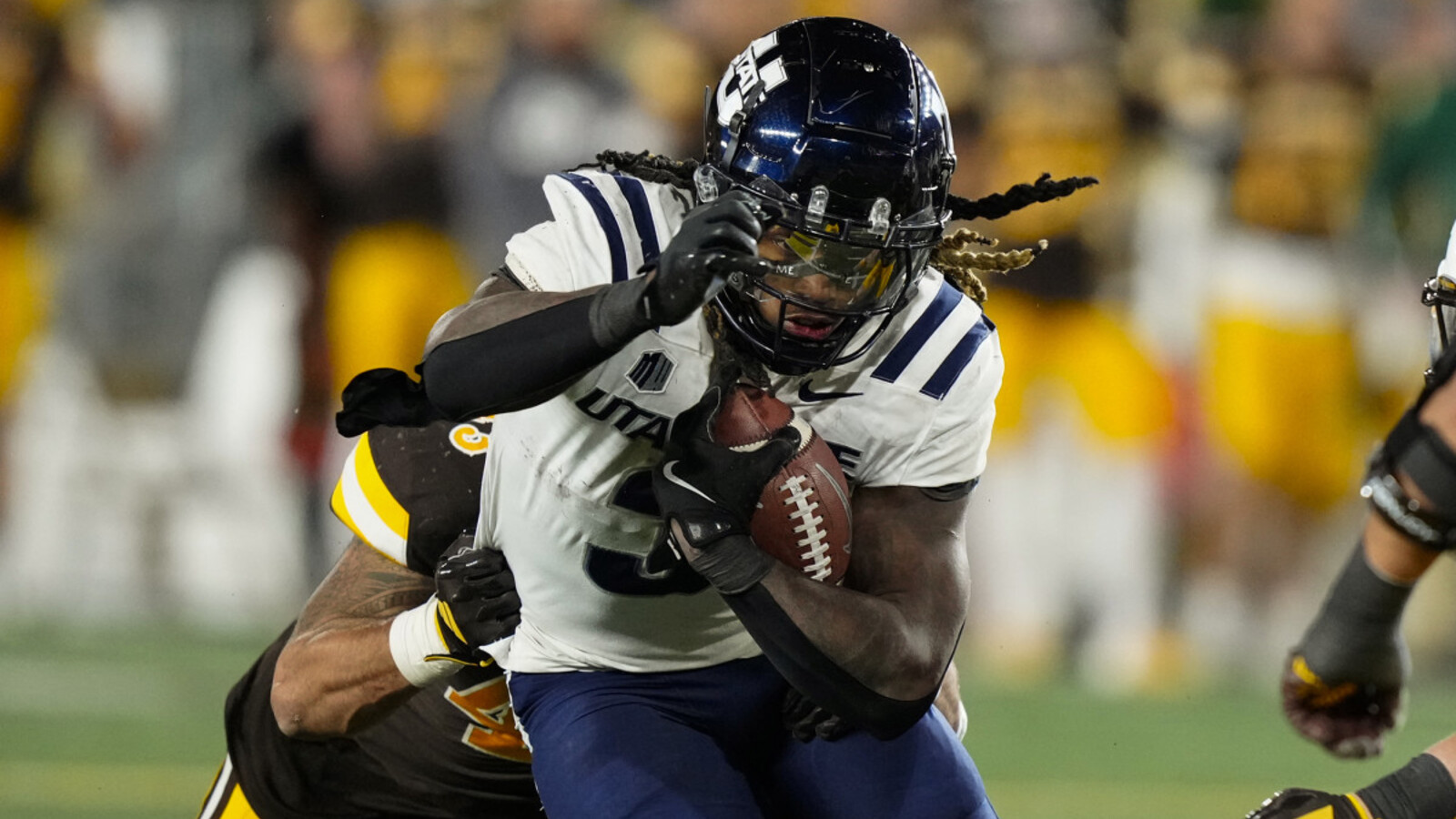
Rahsul Faison isn’t just fighting for his final year on the field—he’s fighting to shake the foundation of NCAA football. And if he wins, he might change how eligibility and NIL power coexist in college athletics forever.
Once a promising Class of 2019 prospect, Faison’s path has been anything but straightforward. After grayshirting at Marshall, sitting out 2020 and 2021, and grinding through junior college before shining at Utah State, he exploded for over 1,100 rushing yards in 2024. That breakout season earned him a 4-star transfer rating and a spot in South Carolina’s backfield.
Now, he might not be allowed to play at all.
Despite playing just three seasons beyond high school—only one at the JUCO level—Faison’s eligibility for 2025 remains in limbo. The NCAA has yet to rule, drawing sharp criticism from Gamecocks head coach Shane Beamer: “We’re frustrated. We’ve seen similar cases get cleared. We’re just asking for fairness.”
NIL
Pay to play
PROVO — As college football continues to evolve in the wake of the NIL era, the traditional model of recruiting, development, and player loyalty is being fundamentally reshaped. At the intersection of this transformation is Will Snowden, the founder of Alpha Recruits, which is a Utah-based organization that helps young athletes navigate the college football […]


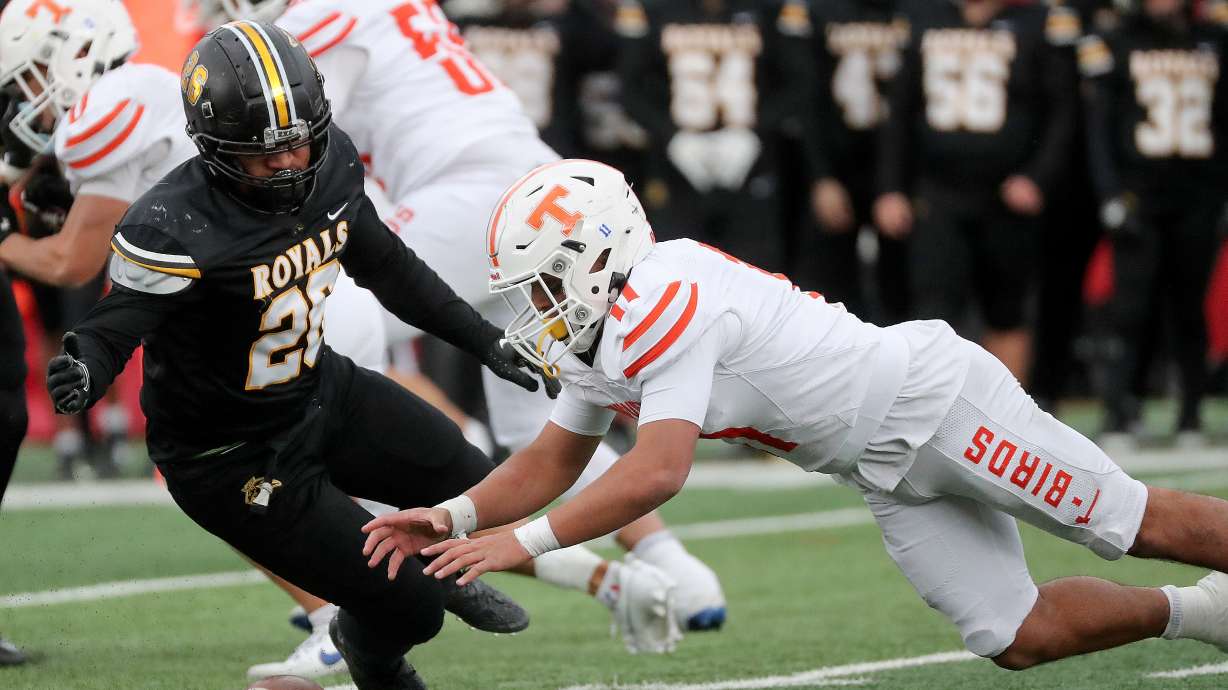
PROVO — As college football continues to evolve in the wake of the NIL era, the traditional model of recruiting, development, and player loyalty is being fundamentally reshaped.
At the intersection of this transformation is Will Snowden, the founder of Alpha Recruits, which is a Utah-based organization that helps young athletes navigate the college football recruiting process.
Snowden has been a firsthand witness to the sweeping changes that NIL, the transfer portal, and increased agent involvement are bringing to the sport, and he doesn’t see things stabilizing anytime soon.
Where once recruiting was a long-term investment — identifying and developing young talent from the high school level — many programs now operate more like free-agent hunters.
The influx of NIL money and the wide-open nature of the transfer portal have turned college football into a high-stakes marketplace, and agents are no longer limited to post-college careers; they are now very much part of the college game, actively recruiting players still in school.
“With college players being paid, a lot of the top agencies are attacking and going to get these players now,” Snowden said in a recent interview with ESPN 103.9 and 98.3 The Fan. “These agents are getting a ton of information about opportunities … all of a sudden, there’s information about what that kid might be worth if he were to get into the portal.”
Free market free agency
The power that agents now wield is remarkable. They serve not just as advisors but as market makers — negotiating NIL deals, influencing transfer decisions, and even initiating contact between schools and players, directly or indirectly.
While some argue this offers athletes much-needed empowerment, others like Snowden are deeply concerned about the lack of regulation, oversight, and long-term planning within this fast-evolving system.
The real winners in this new structure, according to Snowden, are often players who have already proven themselves at the college level and are willing to jump ship. These players, especially those with multiple years of eligibility left, can command significant NIL offers simply by entering the portal and creating a bidding war among programs.
“Most top players are worth more in the portal than they are at their (current) school,” he said. “I don’t see it changing anytime soon because there is no collective bargaining; there is no union. I’m interested to see how it all plays out.”
High schoolers are not high priority
For college coaches, roster management has become chaotic and unpredictable. For high school athletes, it’s even worse. With programs focused on experienced portal players, many high school seniors are being left behind, even when their talent and potential clearly warrant scholarship consideration. Snowden said the impact has been staggering.
“I’ve seen a 75% drop,” Snowden said, referencing the decline in scholarship offers to high school players. “I’m going to tell you something that really upset me. I have a few guys I’m trying to place who are high school seniors — very good, talented. I’m speaking to an (FCS) program and they say, ‘We need a preferred walk-on backer. He’s going to have to pay for his school first.’
“They said, ‘It has to be a portal guy.’ I said to myself, OK, this is what’s really broken. Schools want to complain about the portal but then all they’ll take is the portal.”
The contradiction is glaring.
College programs bemoan the destabilizing effects of the transfer portal but simultaneously rely on it as their primary method of roster building.
For young players dreaming of college football, this has made the process murkier and more discouraging than ever. The notion of being “recruited and developed” is increasingly being replaced by “wait your turn and hope someone leaves.”
Familial ties and third party connections
Snowden’s recruiting work in Utah offers a clear lens into these shifting dynamics. The state has a close-knit football community, where families often have ties to multiple local universities. Loyalty, tradition, and development used to matter.
But even in a place so steeped in football culture, the new economics of the sport are reshaping how decisions are made and where players end up.
“In Utah, it’s a very small community,” he said. “There aren’t many families that don’t have connections to every school in the state. You have so many families that are split.”
These internal divides reflect broader national trends. NIL and the transfer portal have blurred the lines between amateurism and professionalism; and for many players, the decision to transfer isn’t about loyalty, for some it’s about opportunity, and market value.
Families, third-party representation, and agents see a better deal elsewhere and nudge players into the provocative portal. For others, it’s due to the new transactional relationships between programs and players.
Many players recently have been gently encouraged to enter the portal by coaches seeking to free up scholarships or refresh rosters.
“This is the reality. The portal’s a very interesting place,” Snowden said. “Many of the kids that are in the portal were told to enter the portal. The kids are getting hip to the game. … ‘I gotta do what’s best for me.'”
Transactional vs. transformational
Once rare, transferring is now increasingly common. When relations turn transactional, there is a survival instinct that kicks in that reminds players and their families to make the most of their short college window.
Programs, efforting to retain talent, need a strong message and competitive NIL to retain them. Retaining talent no longer depends on just building a strong team culture, winning as a team or offering playing time. It now requires programs to understand each athlete’s financial and long-term personal calculus.
“It just comes down to the kids, their situation, the commitment to the program, their role inside the program as well,” Snowden said.
At its core, Snowden’s work is still about helping young athletes achieve their dreams. But that dream — of signing on national signing day, wearing a college jersey, and slowly working into a starting role — is fading fast. The system is becoming more transactional, and unless structural reforms come into play, the future of high school recruiting could be in jeopardy.
“I’m focused on helping high school kids live out their dream of playing college football,” he said. “And it’s getting harder and harder — not by the day, but by the second.”
The Key Takeaways for this article were generated with the assistance of large language models and reviewed by our editorial team. The article, itself, is solely human-written.
-

 Fashion2 weeks ago
Fashion2 weeks agoThis is poetry in motion.
-
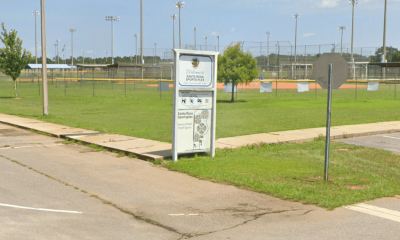
 Rec Sports2 weeks ago
Rec Sports2 weeks agoDeputies investigating incident that caused panic at Pace youth sports complex
-

 High School Sports2 weeks ago
High School Sports2 weeks agoAppling County football to forfeit all 10 wins from 2024
-
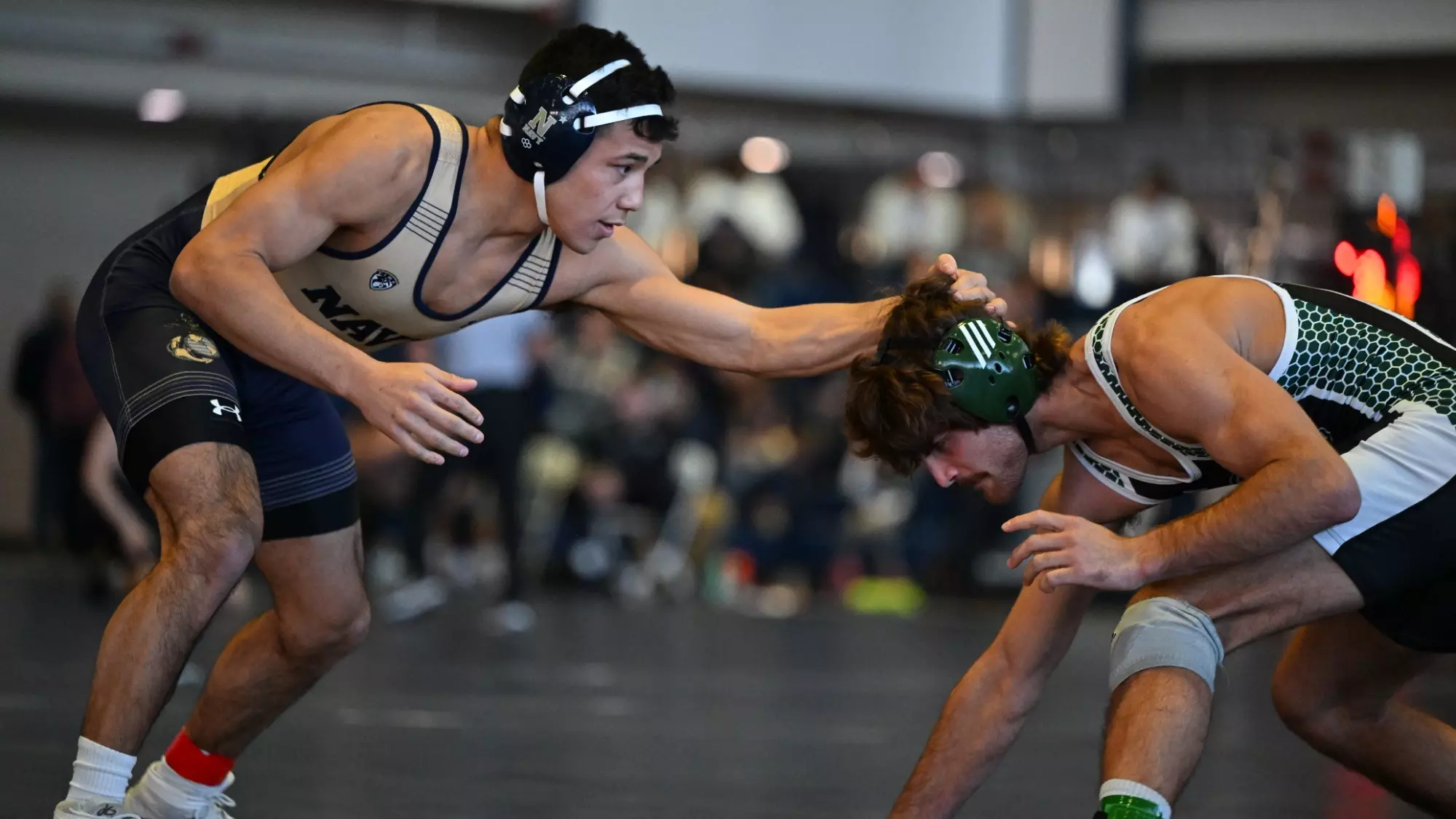
 College Sports2 weeks ago
College Sports2 weeks agoLehigh wrestlers prepare for wrestling U.S. Open
-

 NIL2 weeks ago
NIL2 weeks agoSave Like a Pro: NIL money isn’t free cash—taxes take a bite! Set aside part of …
-

 Sports2 weeks ago
Sports2 weeks agoHow to watch Yahoo Sports' NFL Draft Live show
-

 Fashion3 weeks ago
Fashion3 weeks agoWatch Saudi Arabian GP free live stream
-

 College Sports2 weeks ago
College Sports2 weeks agoDuke basketball's Isaiah Evans on 2025 NBA Draft early entry list
-

 Fashion2 weeks ago
Fashion2 weeks agohas always dreamed in Mercurial. Now his initials are on the boots. The new Kyl…
-

 Fashion7 days ago
Fashion7 days agoHow to watch Avalanche vs. Stars Game 7 FREE stream today
















